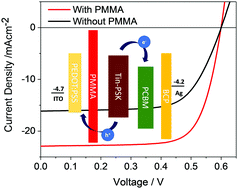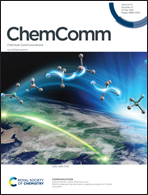Ultrathin polymethylmethacrylate interlayers boost performance of hybrid tin halide perovskite solar cells†
Abstract
Introducing a polymethylmethacrylate (PMMA) layer at the (PEA)0.2(FA)0.8SnI3 perovskite/hole transport layer interface leads to a remarkable improvement in the photogenerated current density and fill factor, resulting in an increase in the power conversion efficiency from 6.5% to 10%. PMMA is proposed to mitigate interfacial charge losses and to induce a more favourable distribution of 2D perovskite phases, elucidating a pathway towards the development of high-performance tin-based perovskite solar cells.



 Please wait while we load your content...
Please wait while we load your content...